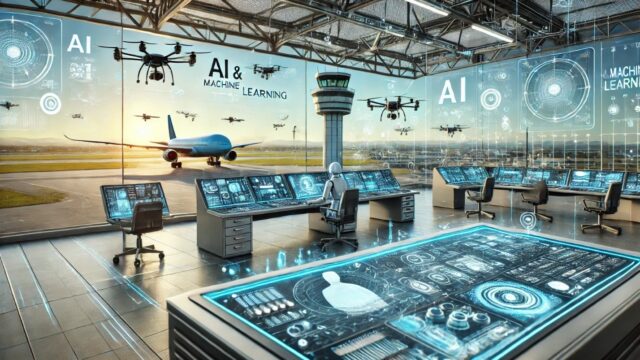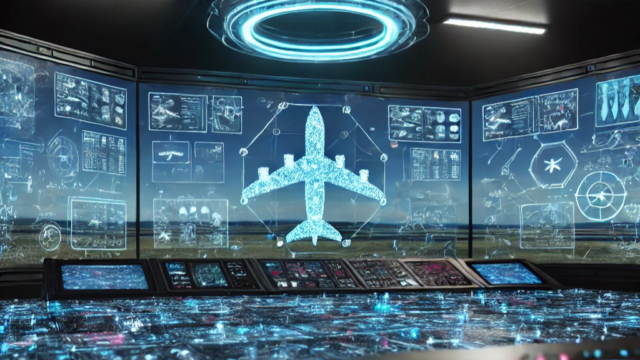July 15, 2024 – Shahrukh Mirza NAWANDISH

In recent years, the aviation industry has experienced significant advancements due to the integration of cutting-edge technologies. Among these, Artificial Intelligence (AI) and Machine Learning (ML) stand out as transformative forces. These technologies have not only enhanced operational efficiency but also significantly bolstered aviation safety. This article explores the profound impact of AI and ML on aviation safety, highlighting key areas where these technologies are making a difference.
Predictive Maintenance
One of the most critical aspects of aviation safety is the maintenance of aircraft. Traditional maintenance schedules, based on fixed intervals, often lead to unnecessary downtime or the risk of unexpected failures. AI and ML have revolutionized this aspect through predictive maintenance. By analyzing vast amounts of data from aircraft sensors, AI algorithms process data on engine performance, temperature, and vibration levels. ML models then identify patterns and anomalies that precede mechanical failures. When a potential issue is detected, the system alerts maintenance teams to take preventive action, ensuring timely repairs and minimizing the risk of in-flight failures.
Enhanced Air Traffic Management
Air traffic management (ATM) is another domain where AI and ML are proving invaluable. These technologies enable more efficient and safer routing of aircraft by analyzing real-time data on weather conditions, air traffic, and other variables. AI-powered systems optimize flight paths, reduce the risk of collisions, and manage air traffic flow more effectively. By ingesting data from radar, satellites, and weather stations, AI systems understand current and projected conditions. ML models predict traffic congestion and potential conflicts, suggesting optimal flight paths for air traffic controllers to direct aircraft safely and efficiently.

Improved Pilot Assistance Systems
Modern aircraft are equipped with sophisticated pilot assistance systems that leverage AI and ML. These systems provide pilots with real-time insights and recommendations, helping them make informed decisions during critical phases of flight. AI-driven pilot assistance systems integrate data from avionics, sensors, and external sources to continuously monitor aircraft systems and environmental conditions. When the system detects a deviation from normal parameters, it processes this information using ML models trained on extensive flight data. It then provides actionable recommendations to the pilot, such as adjusting flight parameters or performing specific maneuvers to maintain safety.
Advanced Surveillance and Monitoring
Surveillance and monitoring play a crucial role in maintaining aviation safety. AI and ML technologies have enhanced these capabilities by enabling more accurate and timely detection of potential threats. AI-powered surveillance systems utilize computer vision techniques to analyze video feeds from cameras positioned around airports. ML models trained on large datasets of normal and abnormal behaviors detect unusual activities, such as unauthorized access or suspicious movements. When a potential threat is identified, the system generates alerts for security personnel to investigate and respond accordingly.
Obstacle Detection and Management
Obstacle detection and management are vital for ensuring the safety of flight operations, particularly during takeoff, landing, and low-altitude flight. AI and ML technologies enhance obstacle detection by analyzing data from various sensors, including radar, lidar, and cameras. These systems can identify and classify obstacles such as buildings, terrain, and other aircraft. ML models are trained to recognize and predict potential obstructions in the flight path, allowing for timely alerts and evasive maneuvers. By continuously monitoring the environment and updating obstacle databases, these AI-driven systems ensure that pilots and air traffic controllers are aware of any potential hazards, thereby preventing accidents and improving overall flight safety.
Conclusion
The integration of AI and ML in aviation is a game-changer for safety. These technologies are enabling predictive maintenance, enhancing air traffic management, improving pilot assistance, advancing surveillance, and improving obstacle detection and management. As AI and ML continue to evolve, their impact on aviation safety is expected to grow, making air travel safer and more efficient for everyone. Embracing these technologies is not just an option but a necessity for the future of aviation safety.




